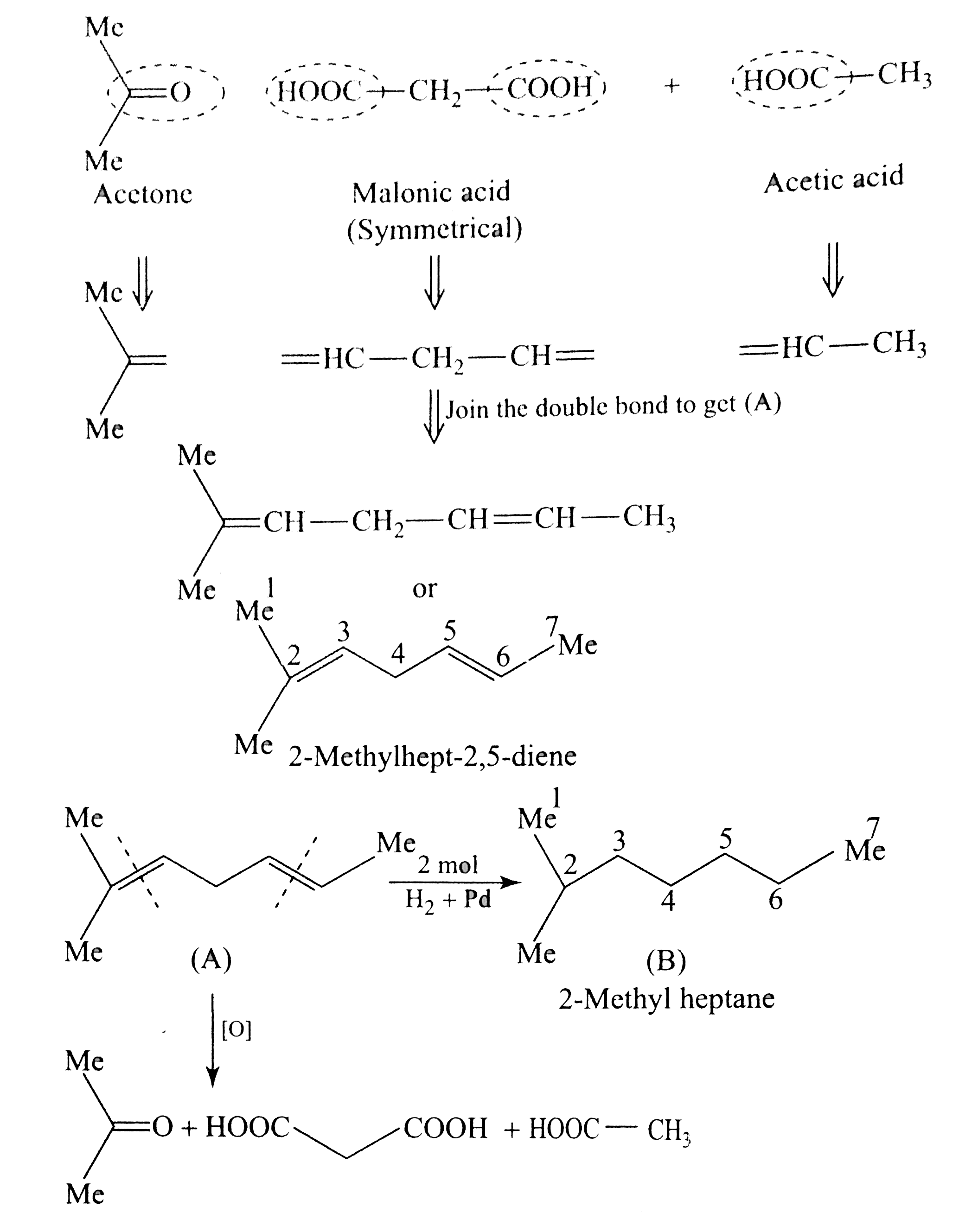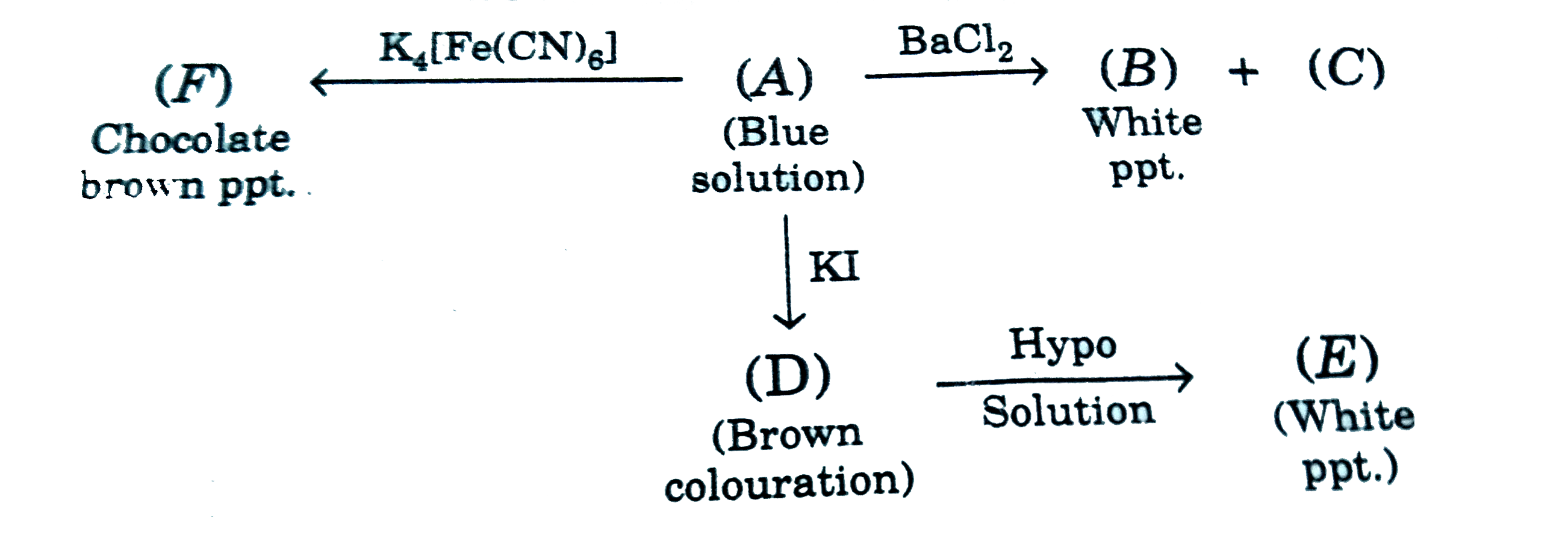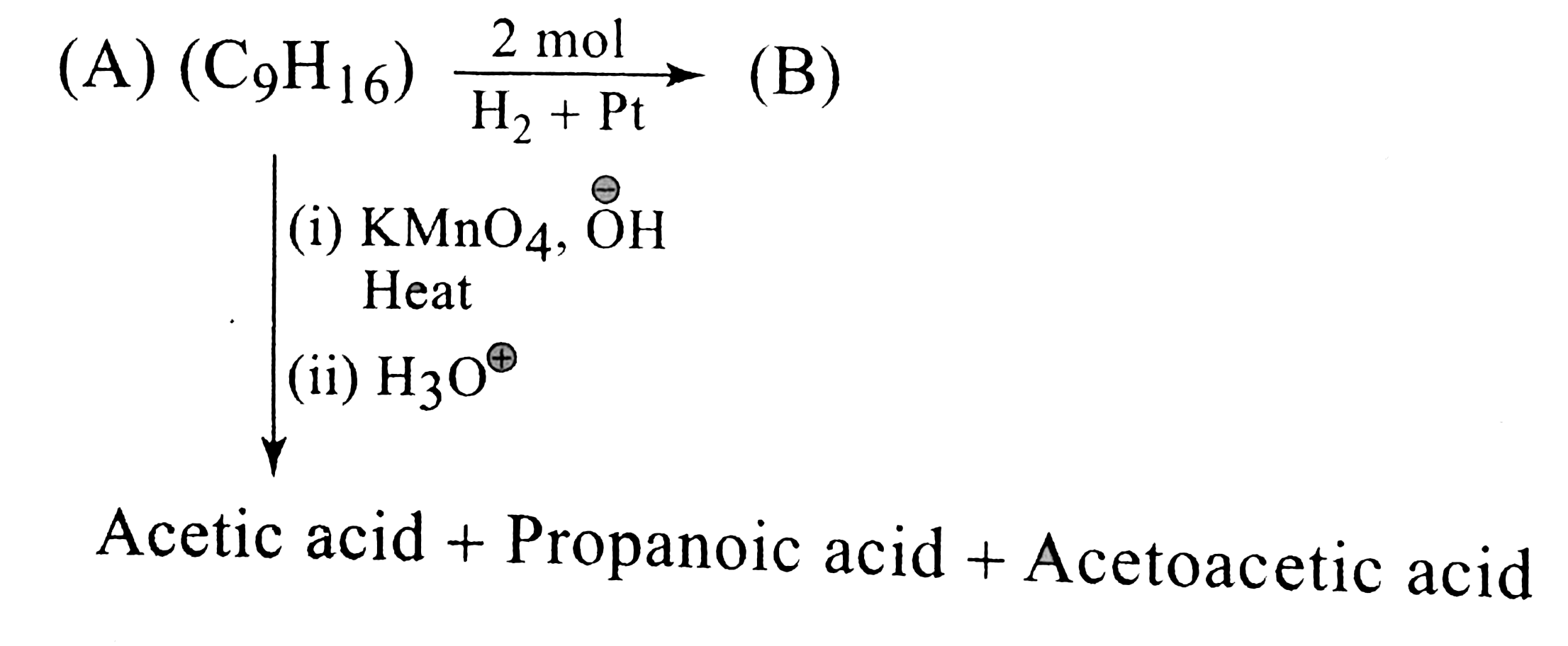Identify compound (A) and (B).

Put the bi− functional malonic acid in the centre and other group on either sides. It is symmetrical and lony one compound of (A) is possible.

Topper's Solved these Questions
- ALKENES AND ALKADIENESBOOK - CENGAGE CHEMISTRYCHAPTER - ALKENES AND ALKADIENESEXERCISE - EXERCISES
29 Videos
- ALKENES AND ALKADIENESBOOK - CENGAGE CHEMISTRYCHAPTER - ALKENES AND ALKADIENESEXERCISE - linked Comprehension Type
38 Videos
- ALKENES AND ALKADIENESBOOK - CENGAGE CHEMISTRYCHAPTER - ALKENES AND ALKADIENESEXERCISE - Single correct Answer
14 Videos
- ALKANES AND CYCLOALKANESBOOK - CENGAGE CHEMISTRYCHAPTER - ALKANES AND CYCLOALKANESEXERCISE - Archives
13 Videos
- ALKYNESBOOK - CENGAGE CHEMISTRYCHAPTER - ALKYNESEXERCISE - Exercises (Archives - Analytical and Desriptive Type)
4 Videos
Similar Questions
Knowledge Check

Identify compound 'E'ACuI2BCuSO4CCu2I2DNa2S4O6Identify odd compound
AGlucoseBGalactoseCMannoseDFructose
Identify the compound XA B
B C
C D
D
Complete the following reaction and identify compounds (A) and (B).
B(OH)3NH4HF2−−−−−→Fusion(A)B2O3−−→Δ(B)
View SolutionA compound C9H7O2CI exists predominanthly in enol from (A) and also in keto from (B) On oxideation withKMnO4 it gives m-chlorobenzoic acid as one of the products. Identify the compounds (A) and (B).
View SolutionCalcium burns in nitrogen a white solid which sufficient water to produce a gas (A) and an alkaline solution. The solution o nexposure to air produces a solid layer of (B) on the surface. Identify the compound (A) and (B).
View SolutionAn aldehyde (A) (C11H8O), which does not undergo self aldol condensation, gives benzaldehyde and 2 mol of (B) on ozonolysis. Compound (B) on oxidation with silver ion gives oxalic acid. Identify the compounds (A) and (B).
View SolutionAn aldehyde (A) (C11H8O) , which does not undergo self aldol condensation, gives benzaldehyde and two moles of (B) on ozonolysis.Compound (B), on oxidation with silver ion, gives oxalic acid. Identify the compounds (A) and (B).
View Solution

